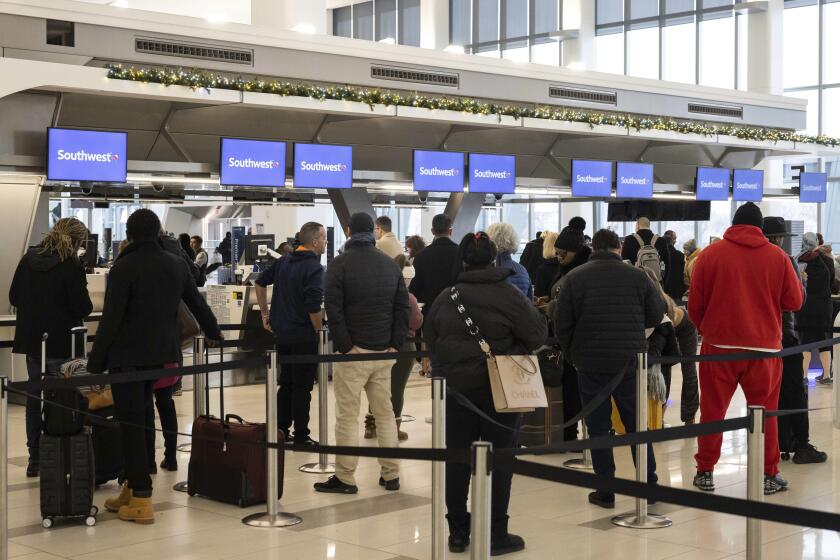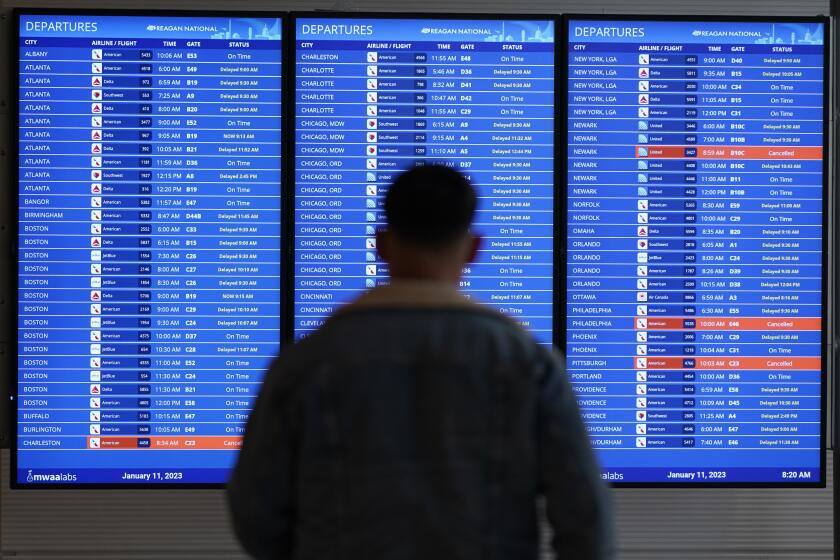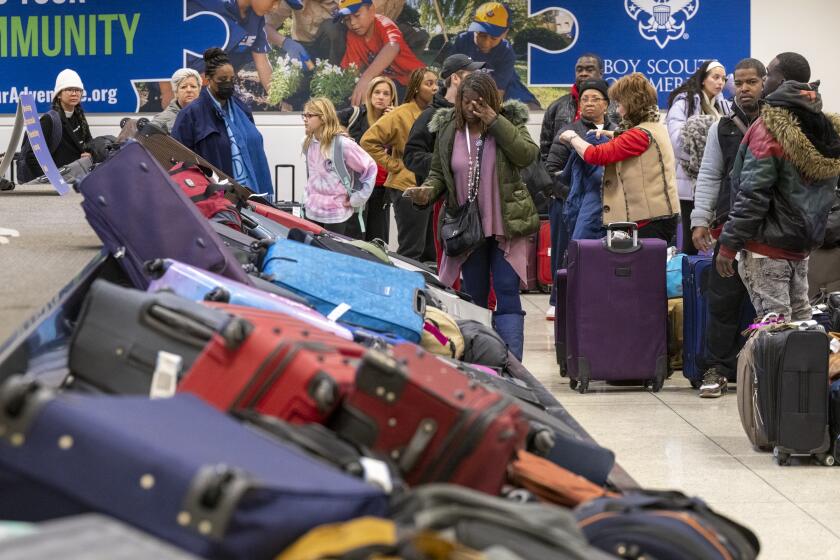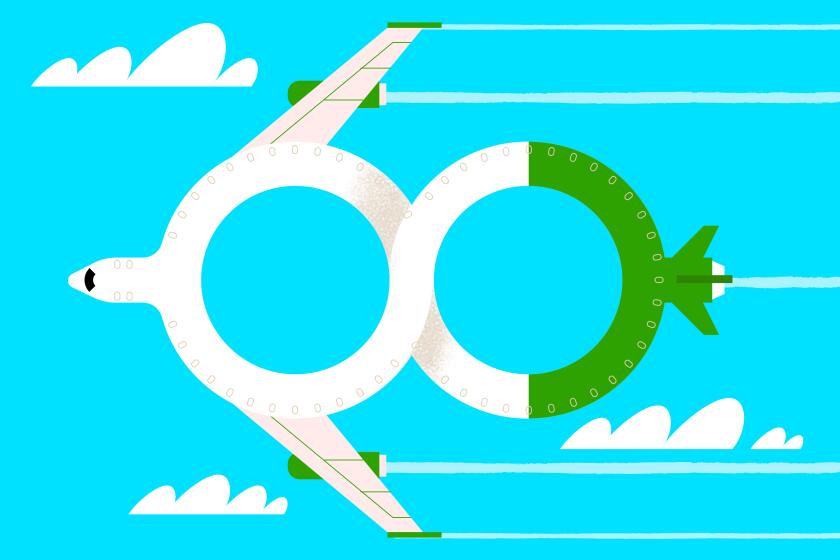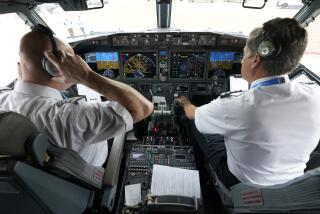Flight canceled? Stuck on the tarmac? Here’s a solution: more women in aviation
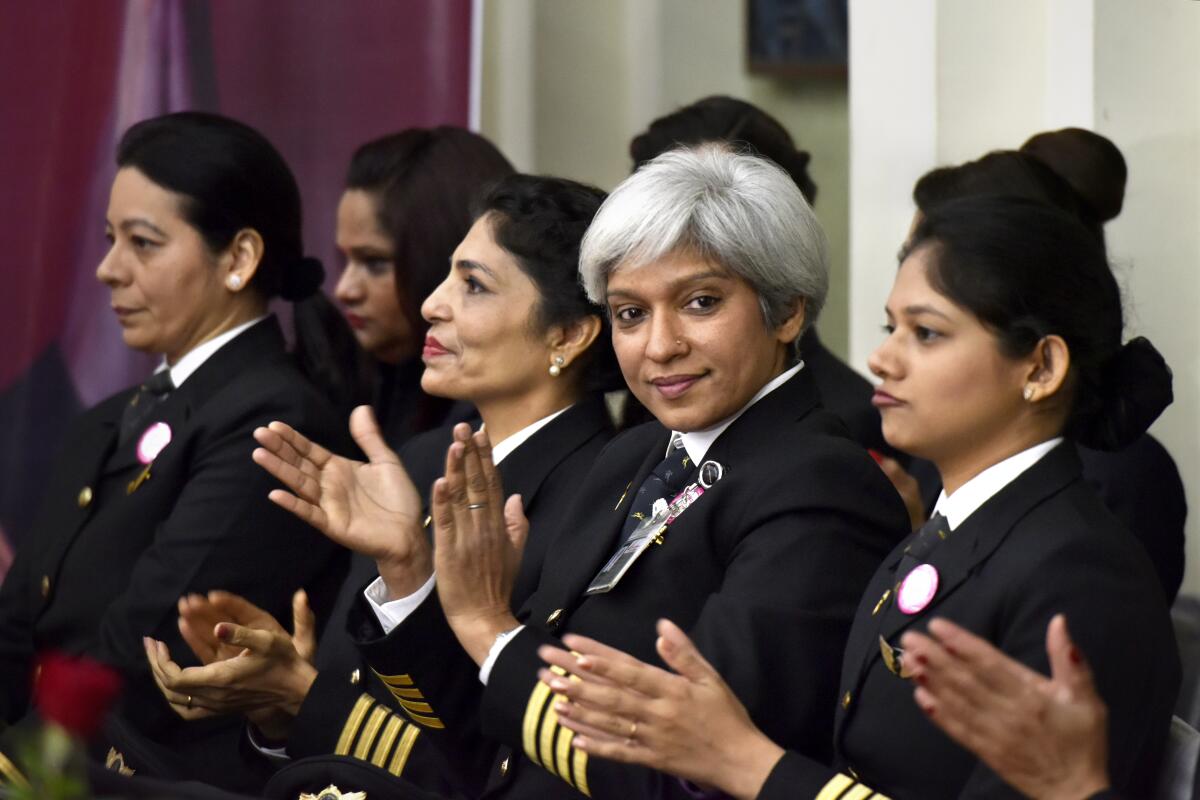
- Share via
The aviation industry has a problem. A shortage of airline pilots is causing a “constraint on capacity,” which translates to canceled flights and delays for travelers — especially on smaller airlines. There’s more: In early April, the FAA warned that a shortage of air traffic controllers is expected to gum up travel this summer, especially in the Northeast. And according to one industry observer, the lack of maintenance personnel in aviation is reaching crisis levels.
Aviation’s capacity woes underline a massive industry blind spot: Women remain largely grounded. Women make up less than 20% of those employed in all aviation jobs in the U.S., a figure that skews that high only because so many flight attendants and customer service agents are women. Only 4.6% of airline pilots are women, and aviation mechanics fare even worse, at 2.6%.
The low pilot numbers are especially discouraging compared with women’s progress in other professional fields. In 2021, women made up 37.1% of physicians in the U.S., up from 7.1% in 1970. In 2022, 38% of attorneys were women, up from 3% in 1970. Overall, women account for 51.8% of those employed in professional, management and related fields.
The Biden administration is starting work on new regulations it says will expand the rights of airline passengers.
What is keeping women out of aviation?
The issue is largely cultural. As several of my male colleagues like to say, U.S. aviation is “male, pale and stale.”
A 2018 survey for Women in Aviation International found that more than a third of women in the industry perceive that a “good old boy” network persists. Women cited “male dominated culture” as a bigger barrier to an aviation career than “family/life/work balance.” And 71% of the survey respondents reported they had been sexually harassed at work.
“Male-centric” defines almost everything about aviation and aerospace. The language of regulations is gendered; equipment and uniforms are designed for men; images in training materials depict mostly men. The message, in big ways and small, is that aviation is not a woman’s job.
A new Government Accountability Office report says airlines, not bad weather, are responsible for a rising percentage of canceled flights.
Even minor attempts to change the culture are often resisted. In December 2021, the FAA changed the meaning of its acronym NOTAM from “Notice to Airmen” to “Notice to Air Missions.” NOTAMs are updates sent to all flight crews in real time about weather or ground conditions that could affect a flight. In addition to being more inclusive, “Air Missions” is also more accurate, but from the male howls of protest that ensued, you’d have thought the FAA was suddenly banning men from the cockpit.
So what can be done? We can look to another country as a model: India.
At 12.4%, India has the highest percentage of female pilots in the world, more than double that of the U.S. One reason is a national push that began decades ago to bring more women into STEM and aviation careers. A program for training students to fly light aircraft has existed since 1948, and many companies and state governments offer scholarships or subsidies to help women earn their wings. Airlines in India have also instituted policies that help women juggle aviation careers and family life, including allowing them to fly while pregnant, providing six months of paid maternity leave, creating flexible work schedules and offering childcare.
In the U.S., airlines are slowly overhauling employment policies to make them more friendly to women, but the comparison is telling. According to one female Delta pilot, Delta provides 12 weeks of paid maternity leave and two weeks of paid parental leave.
Thousands of travelers have been stranded at airports or stuck on hold trying to rebook flights as a massive storm snarled travel in the U.S. and Canada.
In addition to improving work/life balance issues, U.S. aviation must revamp its outreach efforts.
A recent study by the Experimental Aircraft Assn. found that women who entered aviation were likely to become interested at an early age: 29% were younger than 10 when they got hooked. Another survey by the University of Nebraska found that only 15% of women were exposed to aviation during school. But instead of focused national outreach and programs aimed at school-age youngsters, introductory aviation efforts in the U.S. are fragmented, with hundreds of small and large efforts.
The Civil Air Patrol, with its cadet squadrons, is one of the few national efforts to involve kids in aviation; most of the rest are programs sponsored by local airports and small museums. Unfortunately, many depend completely on volunteers, and most are underfunded, which limits the number of participants. In addition, few of the programs specifically target girls and young women.
The premise of the GoWild! pass is simple: Book unlimited flights for fares of 1 cent (plus taxes and fees). It sounded too good to be true. So I tested it myself.
We need an umbrella organization to integrate the disparate programs, develop specific outreach for girls and lobby the industry on women’s behalf. One of its primary tasks should be raising resources for robust local training programs and aviation and STEM scholarships.
We should also set a goal: In 10 years, let’s double the percentage of women in all segments of the aviation industry where they are underrepresented. India has done it. So can we.
Last year, air travelers logged a record number of complaints with the FAA. They were angry about delayed flights and missed connections, millions of cancellations and spending hours trapped in planes that sometimes never get off the tarmac. Until we fix aviation’s “pale, male and stale” problem, the frustrations will only get worse.
Eileen A. Bjorkman is a retired Air Force colonel and the author of “The Fly Girls Revolt: The Story of the Women Who Kicked Open the Door to Fly in Combat.”
More to Read
A cure for the common opinion
Get thought-provoking perspectives with our weekly newsletter.
You may occasionally receive promotional content from the Los Angeles Times.
